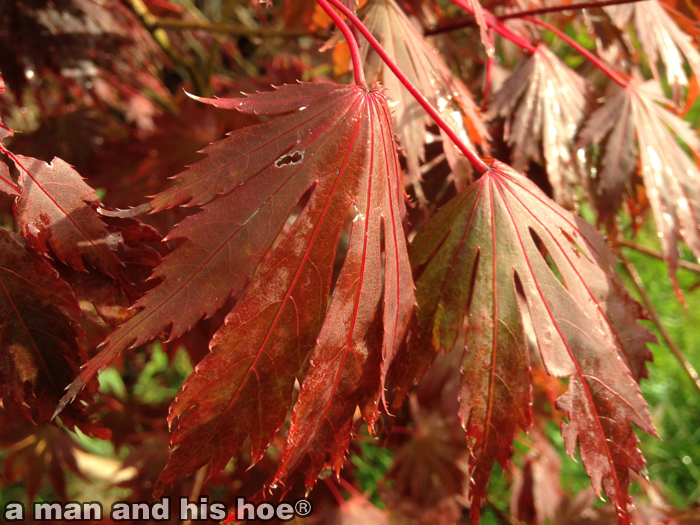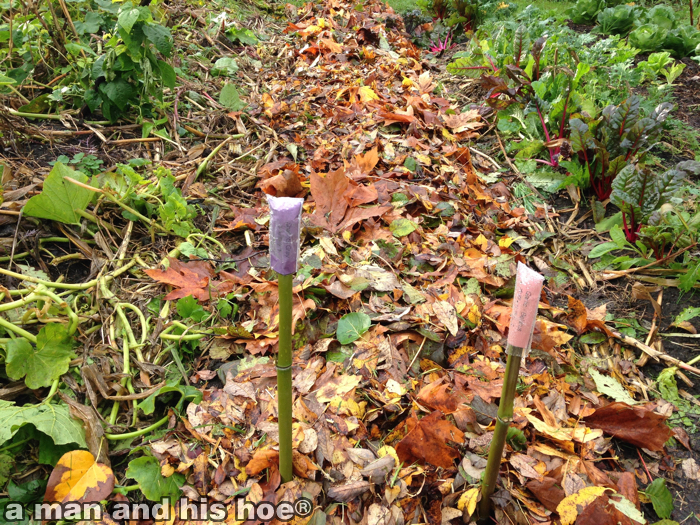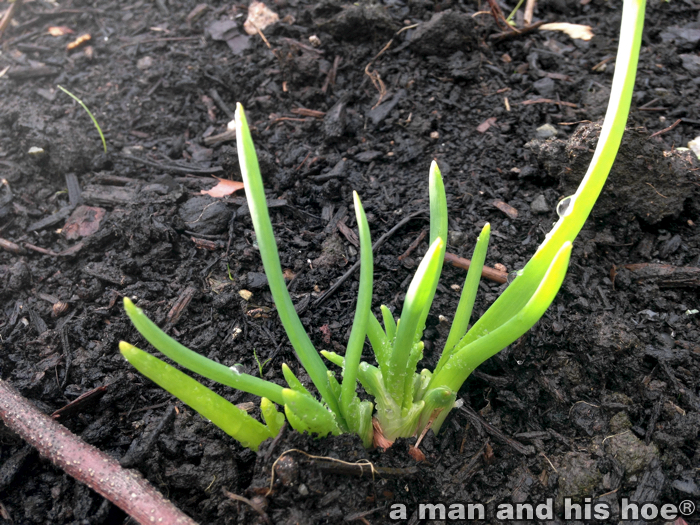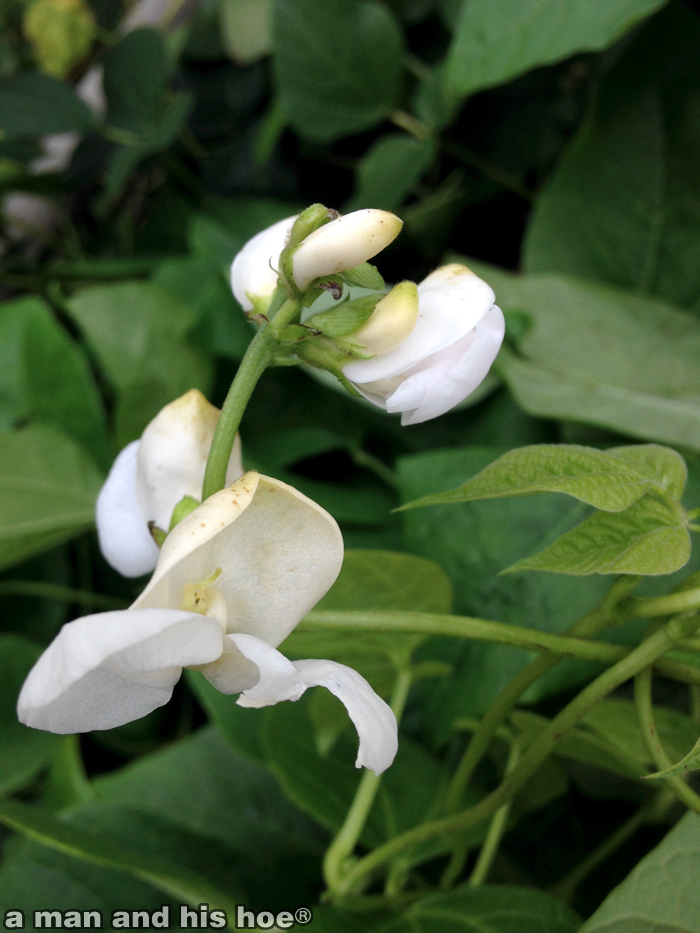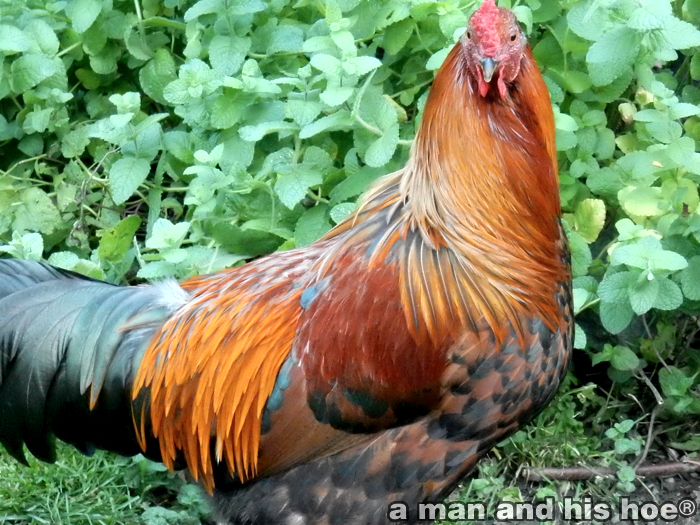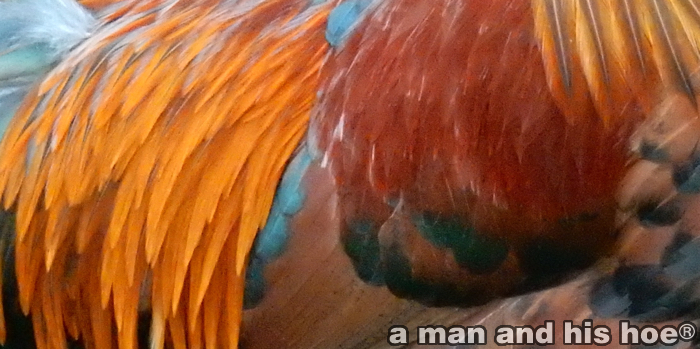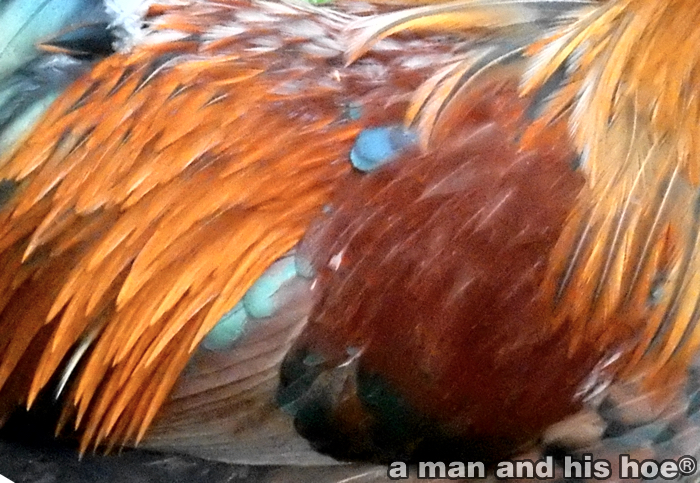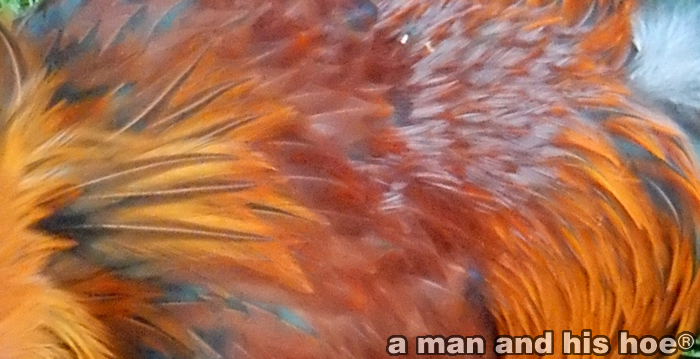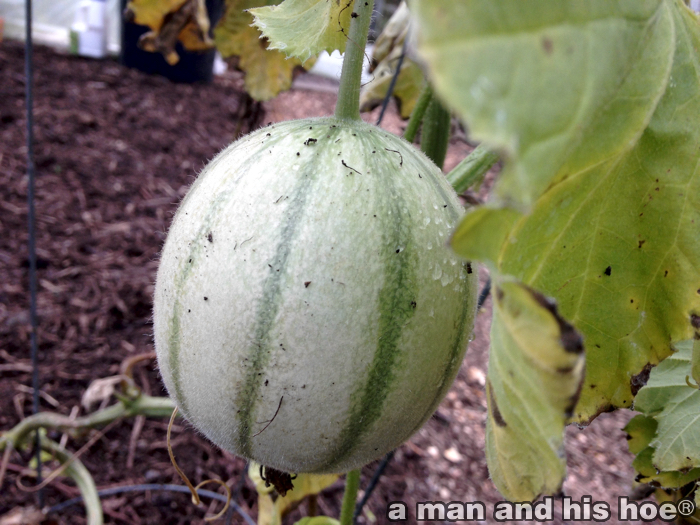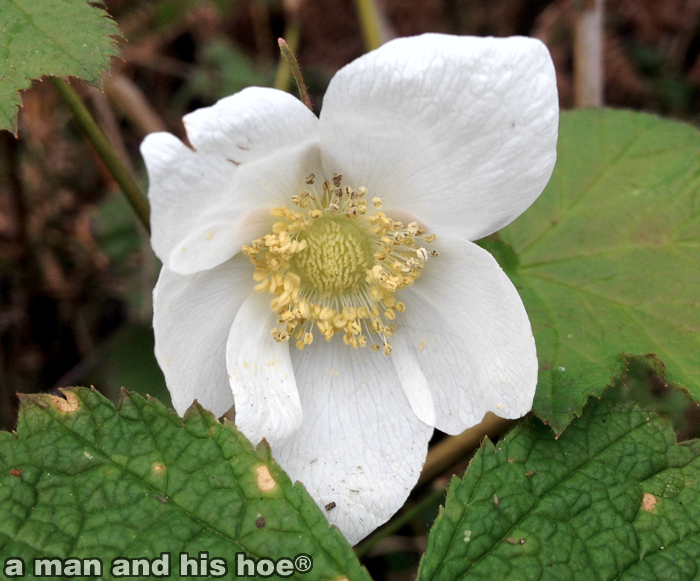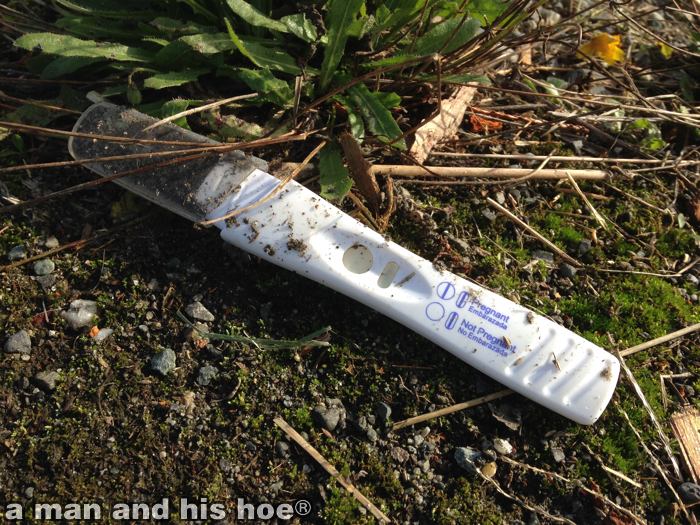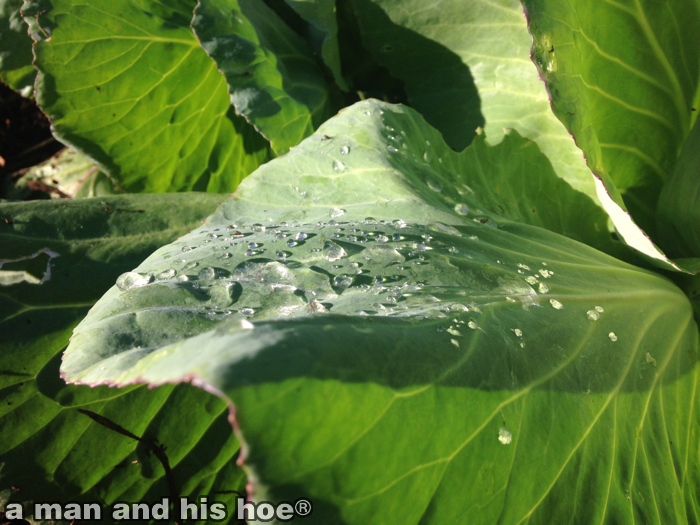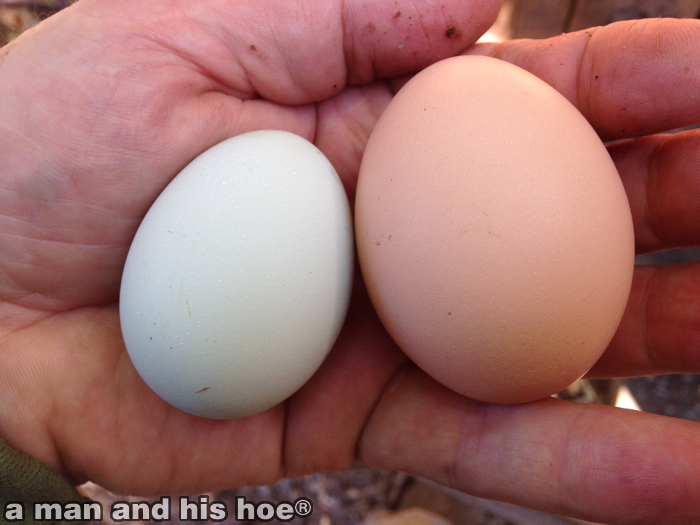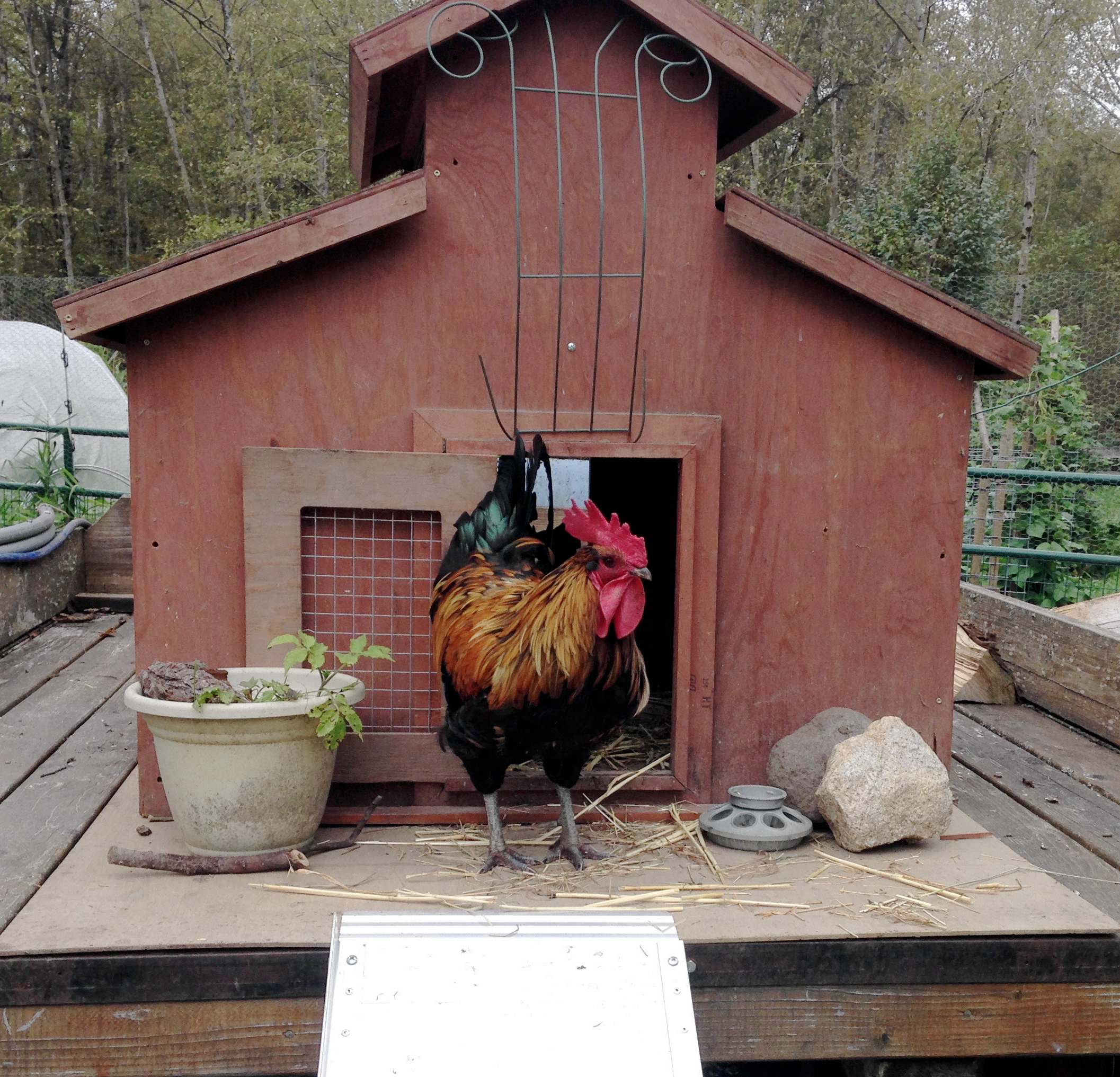
My intention was to turn this pumpkin into several dishes: pumpkin pie, roast pumpkin, pumpkin miso-ni, etc. It’s decorating the gateway instead. Maybe after halloween I can cut it up and eat it.
More pullets are laying now. For the first time in several months, there were more than a dozen eggs today. March and April are the peak of egg production for the flock here. By the end of June the count is noticeably lower, and it usually keeps going down until it picks up again after the New Year. This year, it is increasing early on account of new pullets wanting to lay eggs.
Supposedly hens need 14 hours of daylight in order to lay eggs. My experience is that this isn’t always the case. We are down to 11 hours of visible daylight now and will be down to 9 hours in late December. Even in the darkest days of winter, there are some hens laying eggs. Egg laying is very strong by early March when there are just 12 hours of visible light, so the 14 hour “rule” isn’t something my chickens know about. I won’t tell them. They don’t need another thing to worry about. “Oh, dear, there are just 10 hours of daylight and yet I’m laying eggs. Maybe there is something wrong with me? Should I go to the vet?” No, they don’t need to know that rule.

Each egg is so different. Rarely are there two eggs so similar they are hard to tell apart. Most eggs are distinct. Why do store eggs all look alike? Do they banish hens which have personality? What happens to those hens who lay eggs with a flare? I don’t want to think about it.
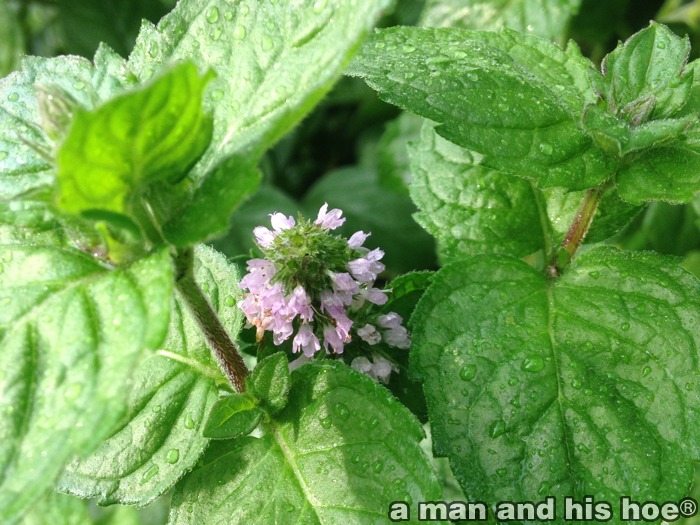
There is so much color this time of year. Mint never stops blooming once it starts. Maple leaves are turning a warm rust color. A row of freshly planted shallots and garlic turns into a quilt of many colors when I cover it with a thick layer of fall leaves.
I saw an article about a sweet potato farm in Japan started several hundred years ago. An integral part of the farm was a deciduous forest next to the fields. Over the centuries the farmers have continuously raked fallen leaves out of the forest and spread them over the fields. The result is that the soil in the fields is soft and many feet deep, letting oxygen filter deep into the ground and maintain a healthy biology for the sweet potatoes to grow.
In another row, a shallot planted several weeks ago is sprouting. Shallot sprouts are always fun to watch. Instead of a single stem poking up out of the ground like garlic, shallots send up whole hands of slender green fingers into the air.
